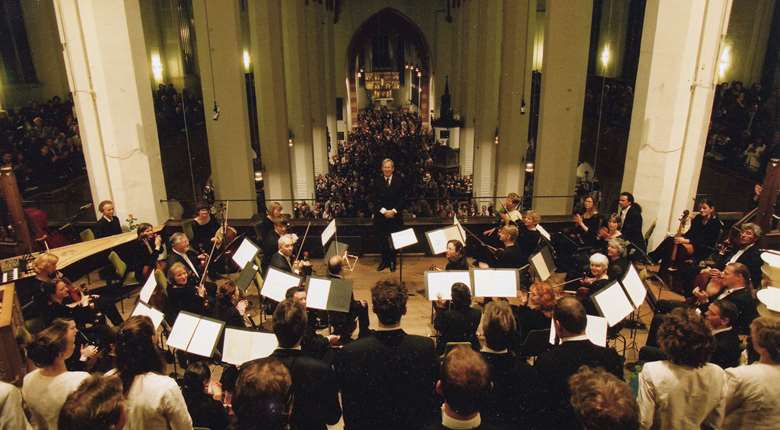What is a Cantata?
Richard Wigmore
Tuesday, April 9, 2019
Richard Wigmore explores the vocal form that was employed so gloriously by JS Bach

Cantata denotes, simply, music ‘to be sung’, as opposed to ‘sonata’, music ‘to be played’. Ironic, then, that the composer who took the sacred cantata to its apogee, Johann Sebastian Bach, rarely used the term, titling his Sunday offerings for Leipzig either ‘concerto’ – denoting combined voices and instruments – or, bluntly, ‘Stück’ – ‘piece’.
Despite late outliers, from Haydn’s Arianna a Naxos to Bartók’s Cantata Profana and Britten’s Cantata Academica and Cantata Misericordium, the cantata is a quintessentially Baroque genre. Its first twitchings were the 1620 song collection Cantade et arie by the Venetian Alessandro Grandi. But the term only became enshrined around 1650, when Italian composers were producing secular chamber cantatas by the bushel.
Giacomo Carissimi, in Rome, led the way, followed by, inter alia, Stradella and Alessandro Scarlatti, whose 600-odd cantatas combine melodic suavity with harmonic daring. By the 1680s the form had morphed from a simple song with variations to a pattern of mingled recitative, aria and arioso, scored for one or two solo voices with either continuo alone or orchestra.
The subject matter of these aristocratic entertainments was typically pastoral-amorous. From the spats of Arcadian nymphs and swains composers created unstaged miniature operas, in an age when successive popes banned opera as a corrupting force (though they had no qualms about castratos). Even more overtly dramatic were cantatas on mythical or quasi-historical subjects: Carissimi’s Il lamento di Maria di Scozia; Scarlatti’s graphic depiction of the psychopath Nero in Il Nerone, or of the grieving Orpheus in Dall’ oscura magion dell’arsa.
Between 1707 and 1709 Handel delighted his opera-starved Italian patrons with reams of cantatas, modelled on Scarlatti but often surpassing him in lyrical allure. He spectacularly exploited the freakish range of a Neapolitan bass to evoke the terrifying African forest in Nell’africane selve. Three outstanding cantatas draw on classical history and myth: the tragic Lucrezia and Armida abbandonata, and the ravishing, colourfully scored Apollo e Dafne.
Across the Alps, Clérambault, Montéclair and others put a Gallic gloss on the Italian cantata (try Clérambault’s Orphée, airly scored for soprano, flute and violin). Bach, Telemann and their German contemporaries occasionally wrote secular cantatas, most famously the Coffee Cantata (the nearest Bach got to comic opera) and Peasant Cantata. German composers, though, excelled above all in the sacred cantata that grew out of the solo motet.
Buxtehude and Kuhnau, Bach’s Leipzig predecessor, produced finely wrought cantatas in the generation before Bach. Then the game changed. The cantatas Bach composed in Mühlhausen and Weimar, including the Actus tragicus, No 106, and the austerely beautiful chorale cantata Christ lag in Todes Banden, No 4, already make new technical and expressive demands. Here and in the 150 surviving Leipzig cantatas – in effect, sermons-in-music – he spared neither himself, his singers nor his players. No wonder a contemporary protested that Bach required ‘singers and instrumentalists to perform with their throats and instruments the same feats he can perform on the clavier’.
Astonishingly varied in design, expression and instrumental colour, Bach’s Leipzig cantatas range from solo works like Jauchzet Gott, No 51 – a virtuoso concerto for voice and trumpet – and Ich habe genug, No 82, with its sublime lullaby on the Pietist metaphor of death-as-sleep, to elaborately worked cantatas based on Lutheran chorales. One of the most overwhelming is No 78, Jesu, der du meine Seele: a journey from sin to salvation that opens with a massive, grief-laden chorale fantasia built on a chromatically drooping lamento bass. In this monumental chorus Bach, characteristically, is at once mathematician, orator and visionary, triumphing over a complex compositional challenge in music that combines theological aptness, piercing beauty and profound personal expressiveness.











